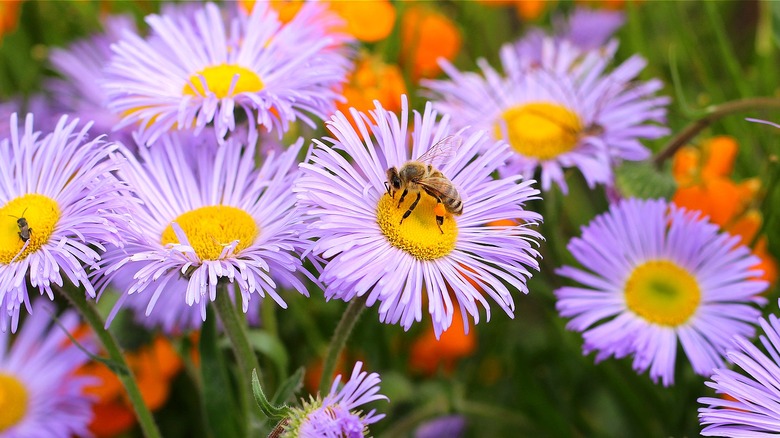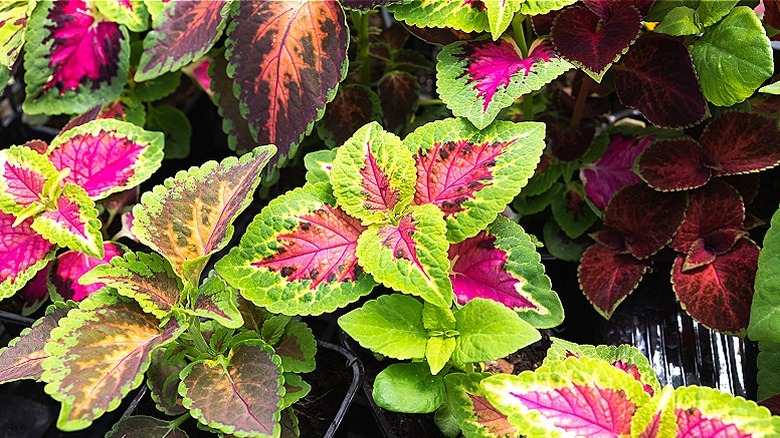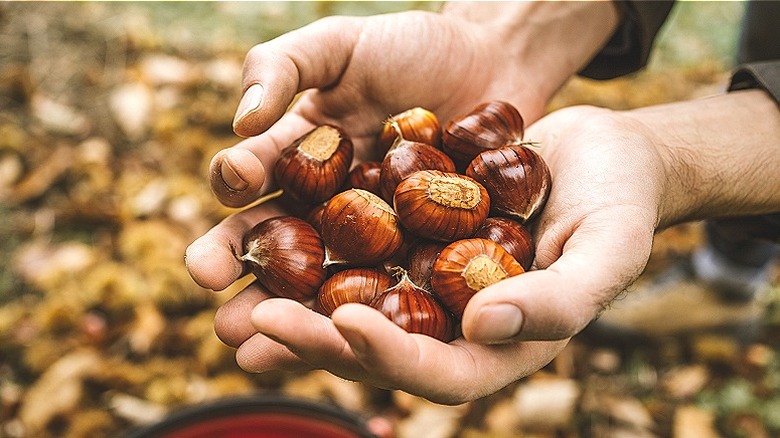Unexpected Color Combinations For A Unique Autumn Flower Display
Everyone loves the golds, yellows, and oranges of fall flower displays, but there are so many other color palettes to choose from. Why not choose something different and unexpected this year, apart from the usual warm-toned hues? This fall, try designing your containers with flowers and foliage in unexpected color combinations, including shades of blue, purple, pink, green, black, white, and pastels.
An important thing to keep in mind when planning a fall container display is to make sure you'll be able to get the plants you want. Some nurseries don't stock much for annuals in fall except for mums, asters, and ornamental kale. In addition to using annuals, though, you can also use perennials in your container designs; plus, you can plan ahead by obtaining these and adding them to your containers when the time comes.
You can also use dried plant material and natural objects such as pine cones, branches, acorns, and gourds, and also consider the colors of your containers. Mixing these earthy-colored objects with bright or pastel flowers allows for a wide variety of looks. Further, consider what kind of aesthetic you want to create. Maybe you want containers with displays reminiscent of the harvest, or maybe something fun for Halloween, something bold, or something more subtle. Color choices are a great way to enhance all of these design approaches.
Hot, cool and pastel color combos
Once you know what plants and materials you have available in the fall, you'll be able to put together new palettes of colors. Maybe you want a bold selection of hot colors like hot pink, magenta, lime green, and bright orange. You can get mums in all these colors, asters in hot pink and magenta, and coleus in various shades of magenta, lime green, and orange. Planning ahead, you can get coleus plants in the summer and transfer them to your autumn containers or beds once September arrives. Black or deep purple petunias would also look great with bright hot colors.
A cool autumn palette is unexpected and soothing. Asters come in many shades of blue, lavender, and purple. Meanwhile, there are reddish-purple and lavender mums, which would go well with cooler colors. If your annual petunias or lobelia are still blooming, these can make a nice frilly addition to your fall container. What's more, late-blooming perennials in shades of blue and purple include ageratum, phlox, snapdragons, sea holly, globe thistle, and monkshood. Consider adding some artemisia with its silvery leaves, or white mums or asters to round out your cool-color palette.
Another unexpected color combination for autumn is pastels. Many mum and aster varieties come in shades of pale pink, blue, and lavender. There are also mums in pale shades of coral and yellow. You can also combine brights and pastels in one container: Try lavender and pale pink mums with lime-green coleus, or pale blue asters with burgundy mums.
Adding creative color elements
In addition to using colorful flowers and foliage, other objects can add unusual or striking hues to your autumn displays as well. Textures can be shiny, smooth, dry, rough, simple, or intricate, and you can mix large and small patterns and shapes, too. There are no rules; add or subtract items based on how the overall design comes together. Resist adding synthetic materials in unnatural colors, though, as too much of this might look "fake" next to your carefully chosen plant materials.
Fallen nuts and pine cones add natural, neutral color to fall designs. Choose objects with intriguing textures and shapes to mix together. Brown pine cones with rosy pink mums and magenta snapdragons would make a striking combination. Fallen chestnuts (also known as "conkers"), meanwhile, placed on the soil surface add a shiny texture and a bright reddish brown hue; try this with light blue asters and hot pink mums. Decorative gourds also come in an array of colors to spice up your containers, from white to blue and green.
Dried plant material can also add striking textures and shapes. Consider using dried hydrangea flowers, dried rose hips, or dried echinacea flowers. Stems of leaves that have changed color can also be added (such as burning bush, amsonia, ninebark, or oakleaf hydrangea leaves) but keep an eye on them and make sure to replace them if they dry out and drop their leafy parts.


